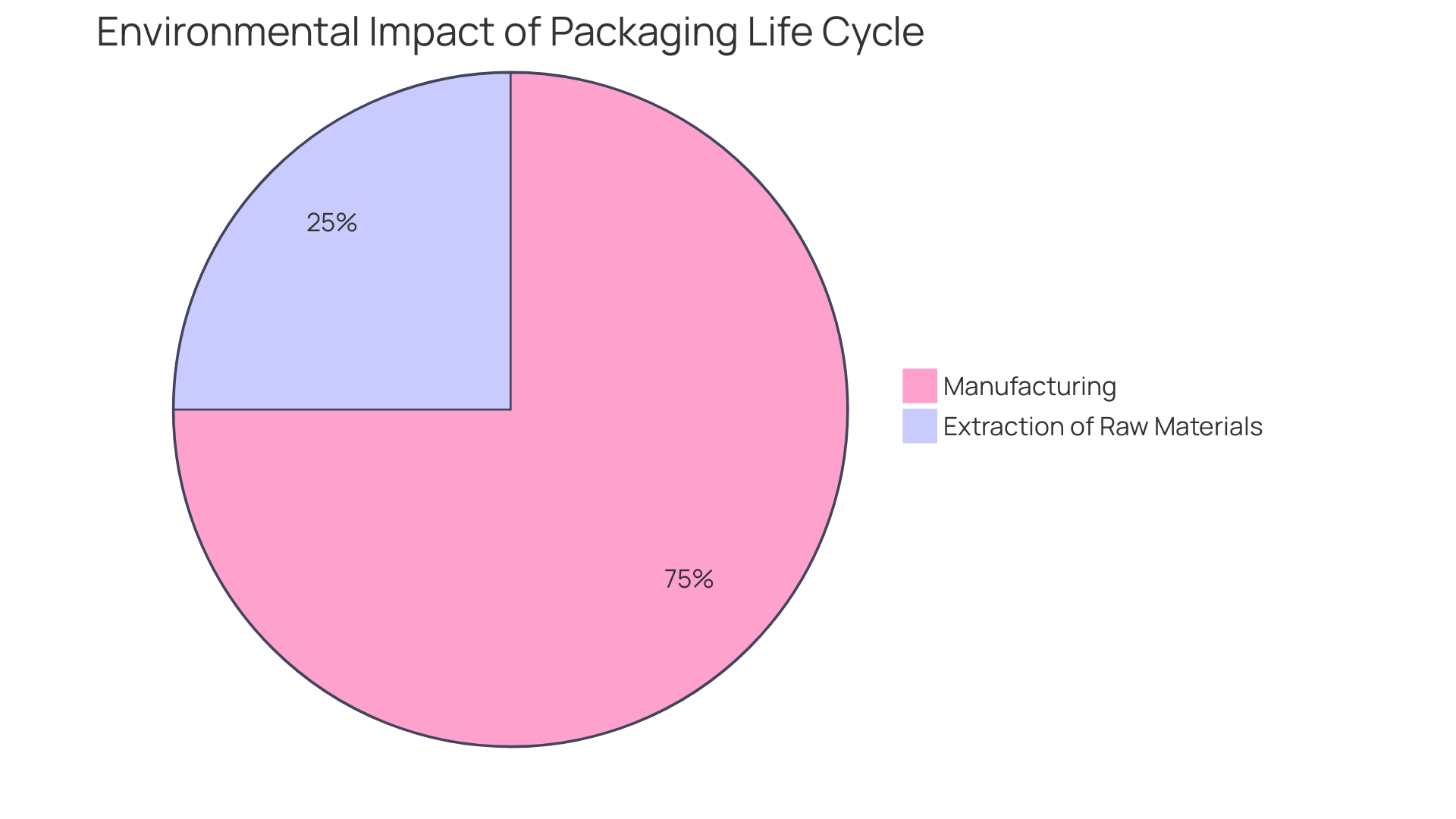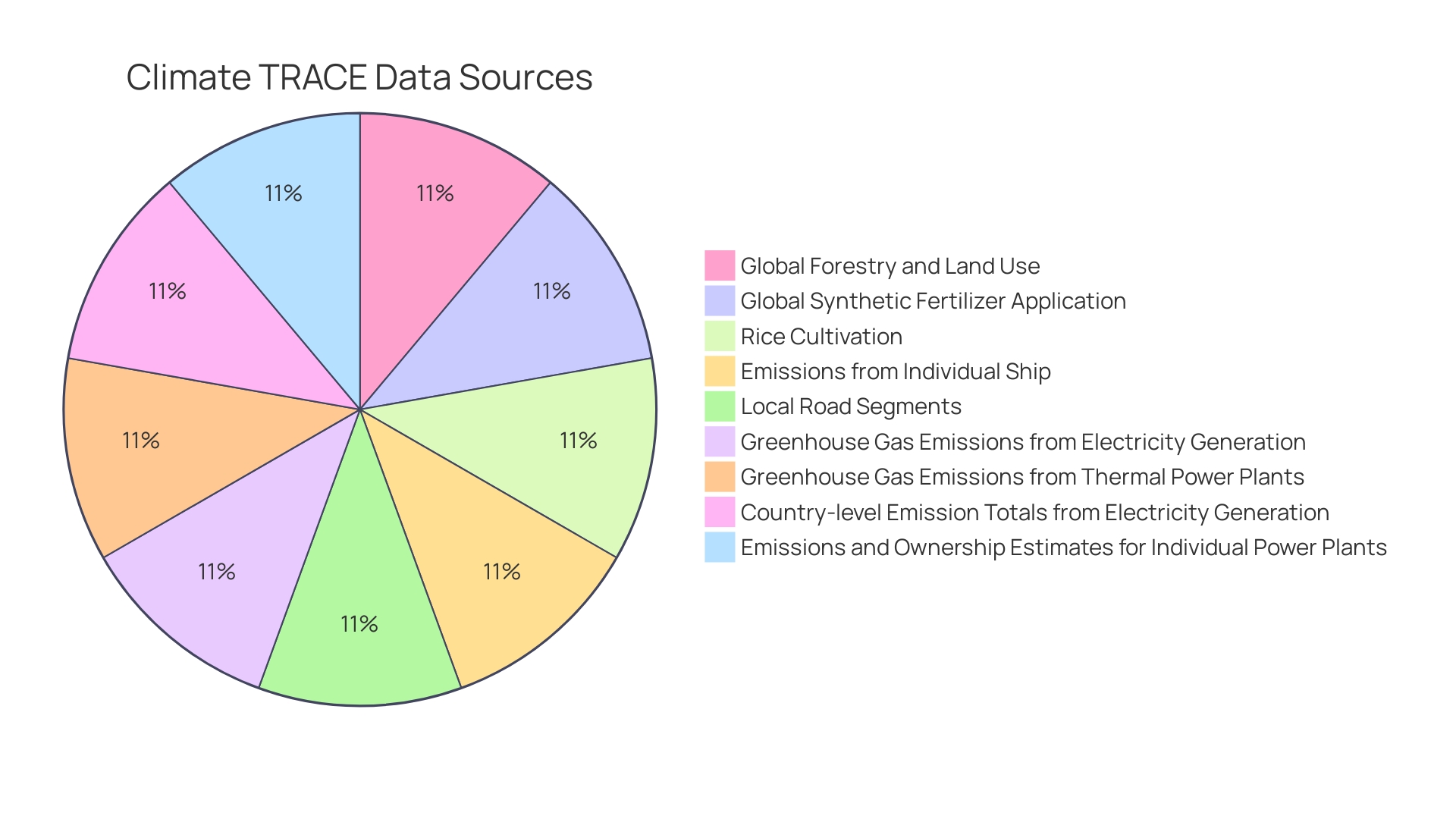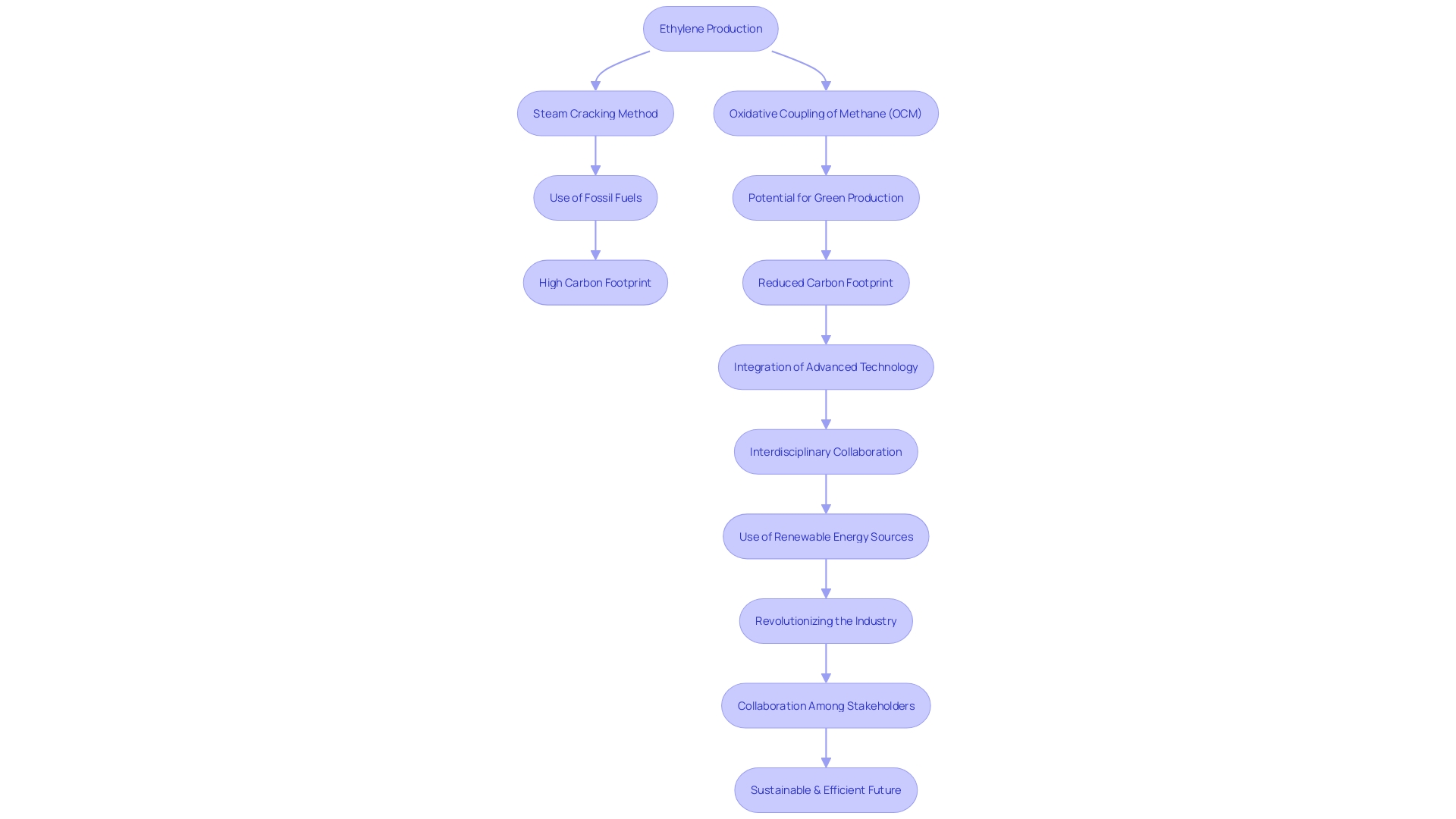Introduction
Ethylene, a crucial element in various industries, is currently produced using traditional methods that contribute to high greenhouse gas emissions and production costs. However, innovative approaches are emerging in the renewable fuels industry, aiming to transform ethylene production into a more sustainable process. One such approach involves utilizing carbon dioxide (CO2) as a raw material, along with hydrogen and other sustainable chemical reactants, to produce ethylene and other valuable products.
These advancements hold promise for reducing emissions and aligning ethylene production with environmental sustainability. Additionally, the integration of renewable energy sources like solar and wind power further enhances the potential for greener ethylene production methods. As the manufacturing sector undergoes a transformation to achieve net-zero emissions, the adoption of clean energy sources and the development of supportive infrastructure and supply chains become crucial.
This comprehensive energy transition will require scaling low-emission technologies and managing interdependencies within the energy system. The future of ethylene production lies in the intersection of chemistry, technology, and systemic changes in energy production and consumption. By embracing these innovations, the industry can pave the way for a more eco-friendly and efficient future.
Current Challenges in Ethylene Production
Ethylene stands as a cornerstone of multiple industries, vital for producing a myriad of products from antifreeze to food packaging, and textiles to building materials. However, its production is traditionally linked with high greenhouse gas emissions, primarily due to the use of fossil fuels both as a raw material and an energy source. This reliance on non-renewable energy sources not only impacts the climate but also raises production costs.
Innovations in ethylene production could pivot on using carbon dioxide—a notorious byproduct of human activity—as a raw material. Combined with hydrogen and other sustainable chemical reactants, CO2 could be transformed into lower olefins, alcohols, and fuels. Yet, for this to transition from laboratory to industrial scale, the processes need to adapt to 'fluctuating conditions,' such as varying supply of energy and raw materials, especially if the energy is derived from renewable sources like solar and wind power.
The oxidative coupling of methane (OCM) represents a potential greener alternative to traditional steam cracking, which is characterized by high temperature and pressure requirements and substantial CO2 emissions. Although OCM has faced economic feasibility challenges due to low yields, recent advancements suggest a promising future where ethylene production aligns with environmental sustainability.
The manufacturing sector, a significant contributor to global greenhouse gas emissions, is undergoing a transformation. The push for net-zero emissions necessitates not only the elimination of process emissions but also the adoption of clean energy sources. Electrification, supported by the cost-competitive nature of wind and solar technologies, offers a pathway to reduce emissions, particularly in the heating and cooling sectors, which are pivotal for industrial applications.
Further emphasizing the need for a comprehensive energy transition, the physical transformation of seven domains, including power, mobility, industry, and buildings, as well as raw materials, new fuels, and carbon and energy reduction, is crucial. Meeting this challenge requires scaling low-emission technologies, developing supportive infrastructure and supply chains, and managing interdependencies within the energy system.
In conclusion, while the production of ethylene is essential for modern life, it must evolve to meet the demands of a sustainable future. Advances in chemistry and technology, alongside systemic changes in energy production and consumption, pave the way for more eco-friendly and efficient ethylene production methods.

Environmental Impact of Traditional Ethylene Production
The production of ethylene, a cornerstone of the petrochemical industry, is fraught with environmental challenges. Traditional methods such as steam cracking of fossil resources are not only energy-intensive but are also responsible for a staggering release of greenhouse gases, contributing to climate change and air pollution. To illustrate, the production of ethylene through these conventional means results in over 560 million tons of CO2 equivalent annually from embedded carbon in the ethylene itself, and an additional 240 million tons from the fuel needed to heat the cracking process. Cumulatively, this equates to approximately 800 million tons of CO2 equivalent each year, accounting for about 1-2% of global emissions.
Ethylene is pervasive in countless products we use daily, from food packaging and consumer goods to construction materials like PVC piping and high-density polyethylene. However, the environmental cost of its production has prompted a search for more sustainable alternatives. One such promising development involves using carbon dioxide, a detrimental byproduct of industrialization, as a raw material along with hydrogen and other chemical reactants, to produce ethylene. This approach requires the ability to operate under fluctuating conditions, a novel concept in chemistry that is essential if the energy for these processes is to be sourced from renewable means like solar and wind power.
The oxidative coupling of methane (OCM) represents another innovative approach that could potentially offer a greener alternative to steam cracking. Despite its potential, the economic viability of OCM has been a challenge due to the lower yield of ethylene it produces. The National Renewable Energy Laboratory (NREL) has been at the forefront, with researchers dedicating decades to studying the life cycles and environmental impacts of renewable energy technologies, including those applicable to ethylene production. Their work in life cycle assessment, supported by an open-source Python library, is pivotal in assessing and improving the environmental footprint of energy technologies.
As we continue to rely on products that require ethylene, it is crucial to explore and adopt these innovative methods that can mitigate the environmental impact of its production. The future of ethylene manufacturing lies in the balance of economic and environmental considerations, aiming to sustain our modern conveniences without compromising the health of our planet.

Emerging Technologies for Sustainable Ethylene Production
Ethylene, a pivotal chemical in the production of a vast array of everyday products from packaging to long-lasting building materials, is traditionally synthesized through steam cracking of fossil resources—a process contributing significantly to carbon emissions. Innovators in the field are now harnessing alternative, more sustainable methods for ethylene production. One such breakthrough involves utilizing carbon dioxide (CO2), a notorious byproduct of industrial activity, in conjunction with hydrogen and other chemical reactants, many of which can be sourced sustainably. This novel approach not only presents a method to repurpose CO2 but also aligns with the global push towards decarbonization, particularly in chemical manufacturing.
The potential of these technologies is immense, considering that ethylene's current production methods are responsible for emitting approximately 800 million tons of CO2 equivalent annually. Transitioning to bio-based processes could drastically cut these emissions. Moreover, the adaptability of such processes to 'fluctuating' energy supplies—characteristic of renewable sources like solar and wind—is a testament to their future viability in an increasingly renewable-powered world.
Recent developments highlight the urgency and dedication of industry leaders to tackle climate challenges head-on. BP's commitment to achieving net-zero emissions by 2050 underscores the broader trend of energy transition within traditionally hydrocarbon-heavy industries. Similarly, the case of Danone working with thousands of farmers to reduce methane emissions exemplifies how system-wide changes are being implemented to address environmental impacts from hard-to-solve sectors.
Industrial biotechnology is emerging as a key player in this revolutionary shift, promising to deliver cleaner production cycles across various sectors. The microbial conversion of organic substrates into biofuels and valuable chemicals, replacing fossil feedstocks, is just one example of the sustainable innovations reshaping the industry. These advancements, coupled with an increasing emphasis on transparency and collaboration, are not only propelling the chemical sector towards a greener future but also fostering trust and differentiation for companies leading the charge.
In the midst of this transformation, the role of AI in scientific discovery cannot be overstated. Its application in proposing new materials and enhancing research capacities is revolutionizing the field, while privacy-enhancing technologies like 'synthetic data' are ensuring that the newfound wealth of information is managed responsibly. With cleantech costs plummeting and investments soaring, the industry is witnessing a paradigm shift that aligns economic growth with environmental stewardship, steering us closer to meeting the objectives of the Paris Agreement.

Case Study: Enhancing Ethylene Production in Microorganisms
Pioneering research in the field of microbial cellulose production has yielded a groundbreaking method to significantly enhance ethylene output. By leveraging a high-throughput process that involved mutagenesis through UV-C light exposure, researchers were able to induce beneficial mutations within bacterial cells. The bacteria were then encapsulated in microdroplets, facilitating selective cultivation based on cellulose production efficiency. This innovative approach has the potential to revolutionize ethylene production by sidestepping the use of fossil fuels, thereby mitigating the associated greenhouse gas emissions. Dr. Christine Gabardo, a notable figure in the field, has co-founded CERT Systems Inc to commercialize this technology, aiming to reduce carbon emissions from ethylene production by one to two tons per ton of ethylene. This advancement aligns with the urgent need to develop sustainable industrial processes, as current ethylene manufacturing significantly contributes to the climate crisis. Ethylene, a critical component in diverse industries from food packaging to building materials, can now be produced in a more environmentally conscious manner, marking a significant step towards a greener chemical industry.
Techno-Economic and Life Cycle Analysis of New Production Methods
Evaluating the environmental and economic implications of novel ethylene production techniques is a multi-dimensional task, encompassing life cycle assessments (LCAs) and techno-economic analyses. These assessments critically examine the sustainability of processes like oxidative coupling of methane (OCM) as an alternative to traditional steam cracking. OCM, in particular, is gaining attention for its potential to reduce greenhouse gas emissions, a significant concern given ethylene's extensive use in products ranging from antifreeze to food packaging.
The methodology for conducting these analyses is guided by established frameworks such as the International Organization for Standardization (ISO) 14040 and 14044, ensuring consistency and comparability. Core to these evaluations is the examination of the entire product lifecycle, from raw material extraction to end-of-life disposal. This approach has been demonstrated in the analysis of the supply chains for key technologies across strategic sectors within the EU, emphasizing the importance of material circularity and supply risk management.
Moreover, the life cycle perspective is increasingly applied in innovative contexts, such as the sustainable management of waste from personal protective equipment used during the COVID-19 pandemic. Research efforts in this area aim to transform waste into value-added products, thereby aligning with sustainable waste management practices.
The integration of LCA results into decision-making processes is further exemplified by advancements in bio-based production systems. For instance, the engineered conversion of indoxyl to Indian for dye production showcases the balance between economic viability and environmental stewardship. Similarly, the development of Bioalbumen®, a sustainable egg protein alternative, reflects the broader trend of harnessing biotechnology for food systems with minimal social and environmental impacts.
The push towards greener ethylene production aligns with the growing acknowledgment that while technology is instrumental in addressing global challenges, it is not a panacea. Sustainable innovation requires a harmonized approach, combining technological advancements with environmental sensibility and economic practicality. As such, life cycle analyses become an indispensable tool, not just for quantifying impacts but also for guiding the transition to more sustainable industrial practices.
Future Directions and Strategies for Improved Ethylene Production
As the world navigates the complex challenges of energy efficiency and environmental sustainability, innovative developments in ethylene production are in the spotlight. Ethylene, a cornerstone of the petrochemical industry and a key component in an array of products from antifreeze to plastics, is traditionally produced through a carbon-intensive process known as steam cracking. This method not only consumes vast amounts of resources but also emits significant levels of carbon dioxide, exacerbating the climate crisis. Recognizing the urgency to minimize environmental impact, the industry is exploring alternative methods such as oxidative coupling of methane (OCM), which promises a greener production process.
Further innovations are inspired by the integration of advanced technology and interdisciplinary collaboration. For instance, the combination of carbon dioxide, a notorious greenhouse gas, with hydrogen and other sustainable reactants, is being explored in laboratory settings to produce lower olefins and fuels. The key to industrializing such processes is enabling them to operate under fluctuating conditions, accommodating the variable nature of renewable energy sources like wind and solar.
The push towards these advancements is not just about environmental stewardship; it's also about leveraging technology to optimize processes and create economic value. In the agricultural sector, for example, integrating diverse technologies has led to enhanced production, reduced costs, and mitigated labor demands. Similar approaches in the realm of chemical manufacturing can lead to the creation of systems that are greater than the sum of their parts, as echoed by experts from Penn State Mechanical Engineering.
The significance of these innovations is underscored by the potential to revolutionize the industry. As Dr. Christine Gabardo, co-founder of CERT Systems Inc., points out, her company's pioneering technology aims to produce ethylene without fossil fuels, both as raw materials and as an energy source, thereby significantly reducing the carbon footprint of the production process.
In the face of these technological strides, the importance of collaboration cannot be overstated. Industry stakeholders, researchers, and policymakers must work together to drive innovation and integrate these emerging technologies into the existing infrastructure, ensuring a sustainable and efficient future for ethylene production. This collective effort is essential to meeting the demands of a global economy while addressing the pressing need for environmental sustainability.

Conclusion
In conclusion, the article highlights the need for sustainable and eco-friendly methods in ethylene production. Traditional production methods contribute to high greenhouse gas emissions and production costs. However, innovative approaches are emerging, such as utilizing carbon dioxide (CO2) as a raw material, along with hydrogen and other sustainable chemical reactants, to produce ethylene and other valuable products.
These advancements hold promise for reducing emissions and aligning ethylene production with environmental sustainability. Additionally, the integration of renewable energy sources like solar and wind power further enhances the potential for greener ethylene production methods. The manufacturing sector's transformation to achieve net-zero emissions requires scaling low-emission technologies and managing interdependencies within the energy system.
The future of ethylene production lies in the intersection of chemistry, technology, and systemic changes in energy production and consumption. By embracing these innovations, the industry can pave the way for a more eco-friendly and efficient future. The article emphasizes the importance of evaluating the environmental and economic implications of novel production techniques through life cycle assessments and techno-economic analyses.
Furthermore, the article highlights the role of collaboration in driving innovation and integrating emerging technologies into the existing infrastructure. Industry stakeholders, researchers, and policymakers must work together to ensure a sustainable and efficient future for ethylene production.
Overall, the article emphasizes the urgency to adopt sustainable and innovative methods in ethylene production to minimize environmental impact, optimize processes, and create economic value. The intersection of advanced technology, interdisciplinary collaboration, and environmental sensibility will be crucial in achieving a greener and more sustainable chemical industry.




